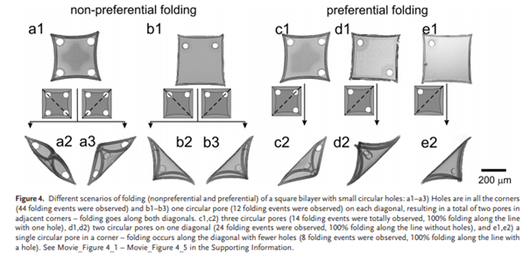Hole-Programmed Superfast Multistep Folding of Hydrogel Bilayers
Abstract
Two important aspects of actuation behavior of stimuli-responsive hydrogels are the complexity of the shape change and its speed. Here, it is shown that varying the shape of simple polymer bilayers can result in very complex and very fast spontaneous folding. The complexity and high folding rate arise from the choice of the shape and from the presence of inhomogeneous swelling within the thermoresponsive layer entrapped between the top hydrophobic layer and the substrate. In contrast to homogeneous swelling of a freestanding bilayer, which leads to a gradual increase of curvature throughout the whole bilayer, inhomogeneous swelling first results in complete rolling of the periphery of the film, which changes its mechanical properties and affects the subsequent morphing process. Further swelling of the thermoresponsive layer generates more stress that builds up until a buckling threshold is overcome, allowing very fast switching from the flat edge-rolled configuration into a folded one. The research demonstrates how the introduction of holes into actuating bilayers gives rise not only to a novel geometric control over the folding fate of the films but also adds the ability to tune the rate of folding, through the careful selection of hole size, location, and shape.






